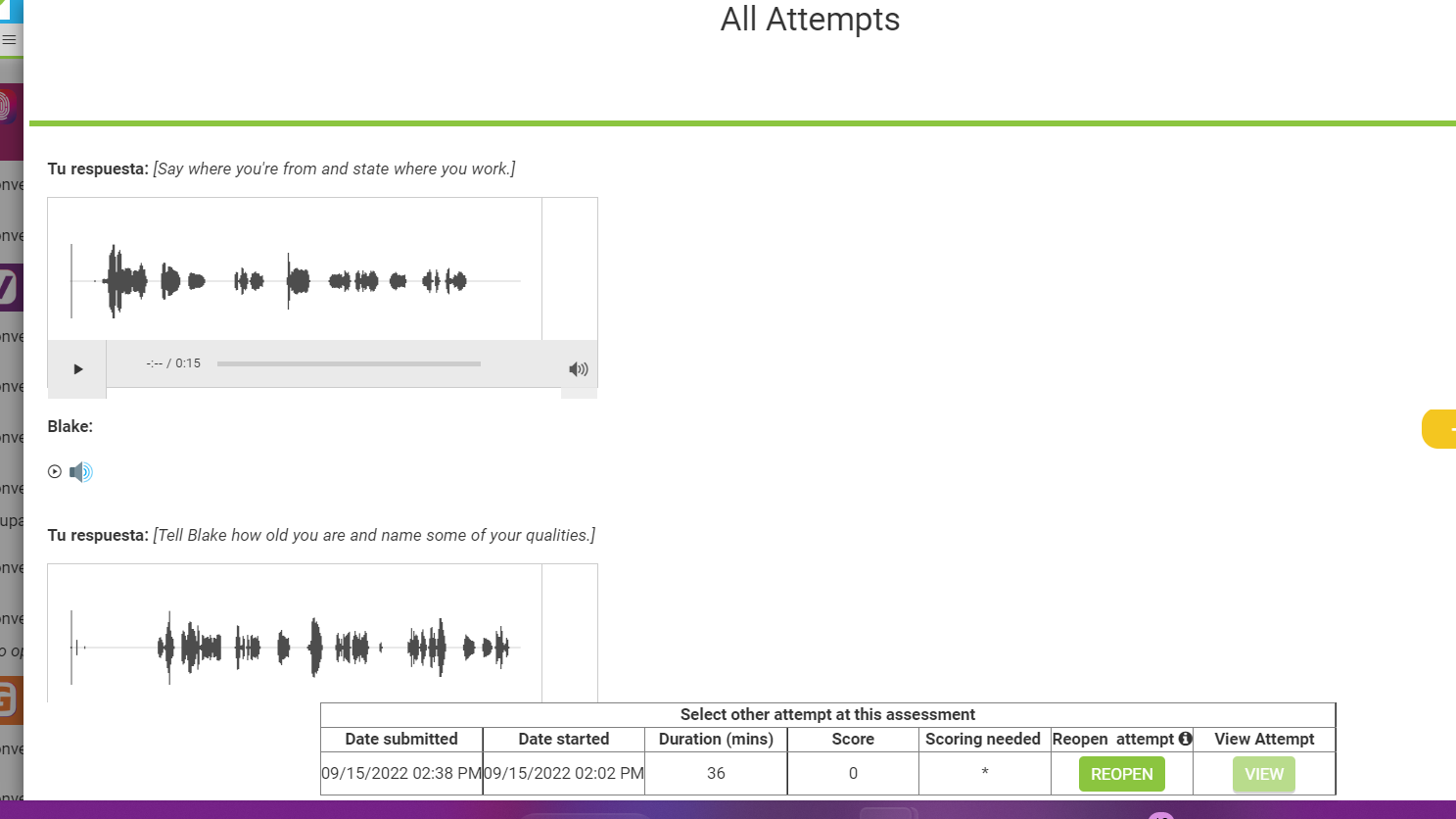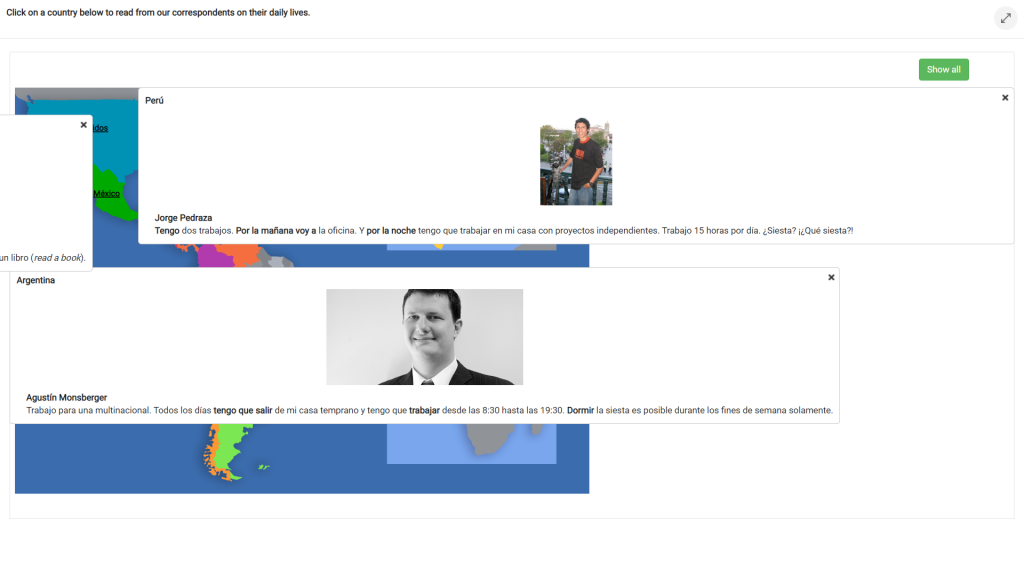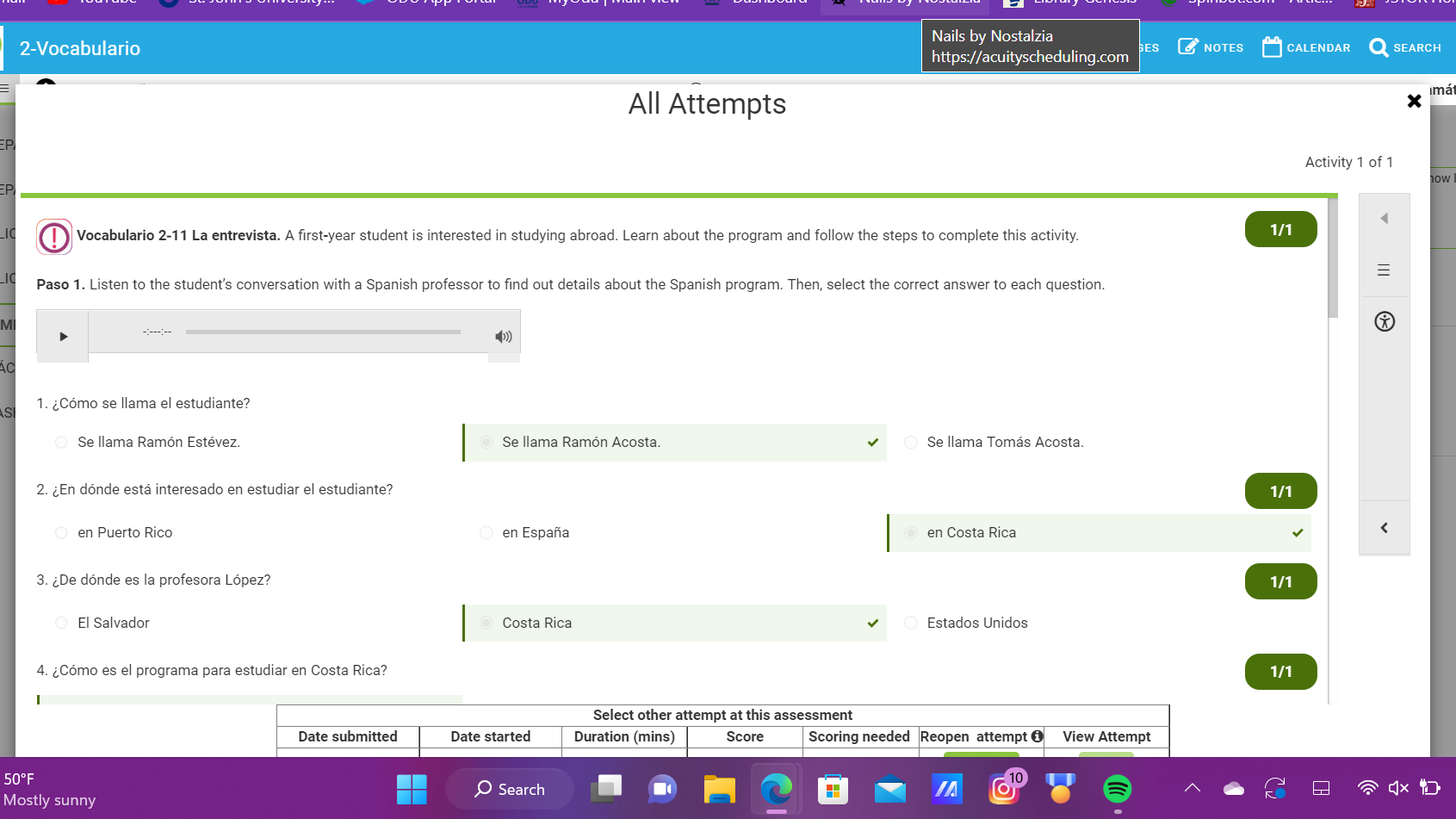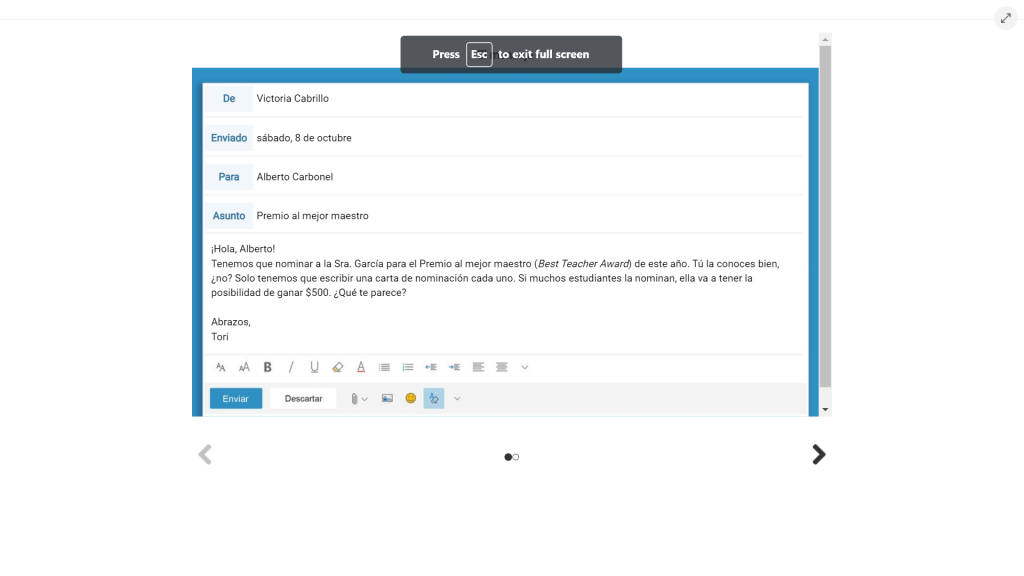Interpretive, Interpersonal, and Presentational Modes of Communication
Over the semester, I feel as though I have greatly improved my Spanish. Before entering this class, I had previous knowledge of Spanish but since it has been a while since I’ve taken a Spanish class, I needed a real refresher. With the online platform we use in class and out, LingroLearning, I was able to review the foundational aspects of the Spanish language and remember them. LingroLearning’s Practicar and Conversar helped me the most because speaking and actively thinking in Spanish is one of my obstacles. I am better at understanding and reading/writing Spanish than I am at actively having a conversation in Spanish. But, with those tools, it taught and helped me improve with speaking Spanish to other Spanish speakers.

Instructions
Exploring Culture
Cultural Exploration in LingroLearning helped me gain a better understanding of other Spanish-speaking cultures. It showed me how different cultures have different daily lives, such as college life and practices such as siestas. In my Honduran culture, we practice siesta usually after a big meal during lunch or early dinner. But, I learned that some cultures don’t or are unable to have siestas due to how fast life is in different cities/countries such as Peru and Argentina

Engaging in Communities
With globalization and new technology, it is easier than ever to communicate and interact with different countries and regions. It is important to interact with other cultures in order to promote global unity and explore different cultures.
Interpersonal Communication
At the beginning of the semester, in class, we would have sporadic activities to do such as interviewing each other by asking each other questions like Como te llamas and Como Estas. Then we would present that to the class. This activity was fun for me but nerve-racking because I enjoy meeting new people but I have anxiety when I have to say the right thing in Spanish. It’s also comforting being around students who are in the same struggle with the communication barrier as me.
Presentational Speaking
Throughout the semester, we completed projects that consisted of videos like interviews and showing our university and its features. My favorite was the one showing the university because I enjoy sharing my favorite things with people. These videos had to show our faces and feature us actively thinking in Spanish to speak and describe our school. It was a challenge but it helped me practice that skill since that’s my hardest feature of learning Spanish. Now, after doing those types of activities, I am comfortable with having a casual starter conversation with another Spanish speaker.
Presentational Writing
One of the writing we did that helped me was writing about our daily schedules and what we do each hour. It was difficult to explain what I do on a daily basis, especially when having to describe what we have to do each hour. For me, telling time in Spanish is very hard because I wasn’t really taught how to tell the time in Spanish in my previous high school years. But, by practicing in class and drawing a calendar along with doing LingroLearning, I am able to tell the time in Spanish now whether it’s at night, afternoon, or morning.
Interpretive Listening
Listening activities that we have done were completed in LingroLearning. We had multiple where we had to listen to an audio or a video of a conversation and answer questions based on them. One that I remember is two roommates meeting for the first time, someone who only speaks Spanish and the other mainly speaks English but took Spanish in school.
For me, trying to understand a native Spanish speaker is hard because of the different pronunciations and speeds of the language. Now, I know how to ask them to slow down or repeat what they said in Spanish so they understand that I am truly trying to understand them.

Interpretive Reading
In class, I have read letters such as one between two friends (casually) and between a student and an adult (formal) about recognizing one of their teachers as Teacher of the Year. This activity helped me overcome those times where I get stuck trying to understand and taught me to use more context clues and prior knowledge to understand the letter.

